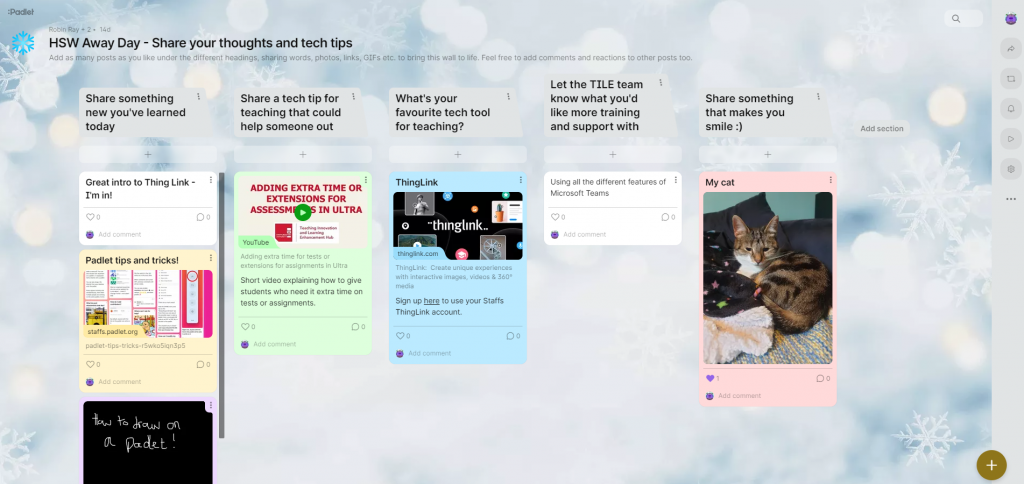It was an honour to join the School of Health, Science and Wellbeing (HSW) at their Winter Expedition inspired away day!
The event took place in the LRV at the Leek Road campus of Staffordshire University on Friday 1st December 2023. The aim was to introduce staff to the concept of “Simmersive” experiences, and with the help of games and activities, allow them to embed the concept in practice.
Simulation has emerged as a powerful and transformative tool in providing an innovative and dynamic approach to education. In a world driven by technology and characterized by constant change, the traditional methods of learning are evolving to offer hands-on practical learning experiences. Simulation, with its immersive and interactive nature, has proven to be an asset in fostering experiential learning, critical thinking, and skill development across various disciplines.
At Staffordshire University, we have access to many interactive technologies that can help you implement simulated practice in learning materials for students. Our TILE Hub team was kindly invited to the HSW away day to demonstrate the tools we have at our disposal for academic staff.
VIRTI
TILE Hub’s very own Simran Cheema presented this demo to staff at the away day and talked them through the features of VIRTI and the potential with this type of technology. The overall reaction was incredibly positive!
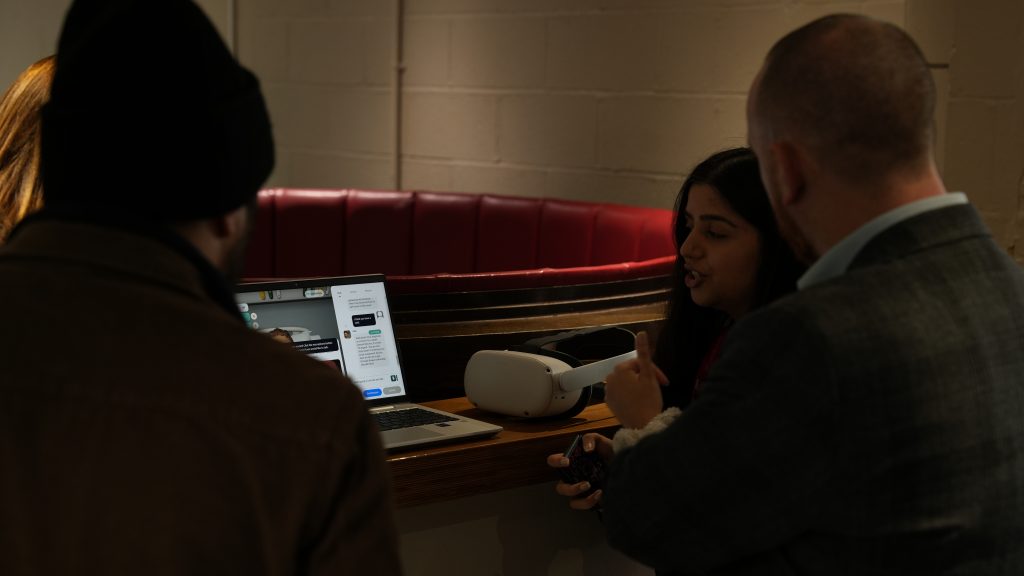
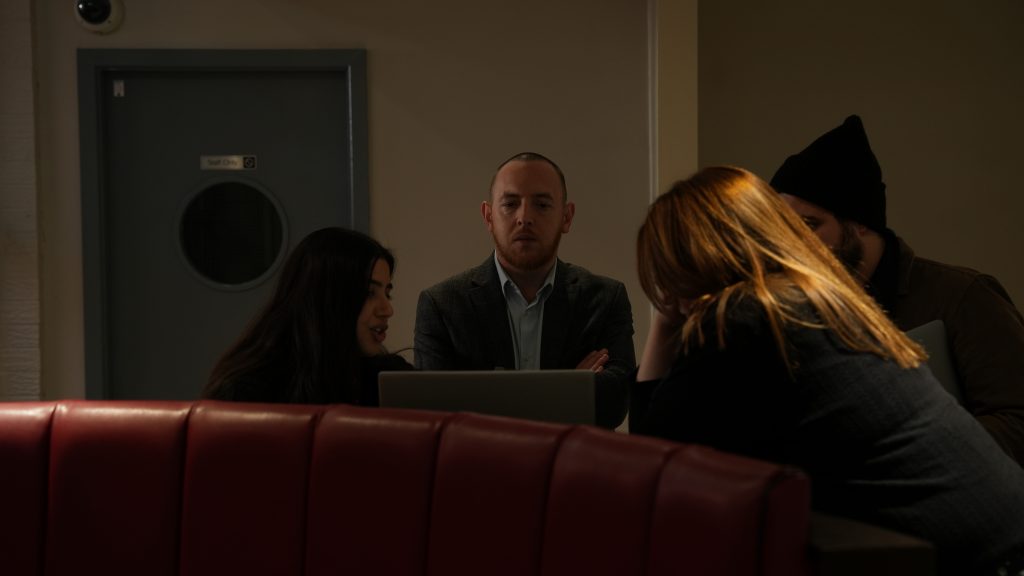
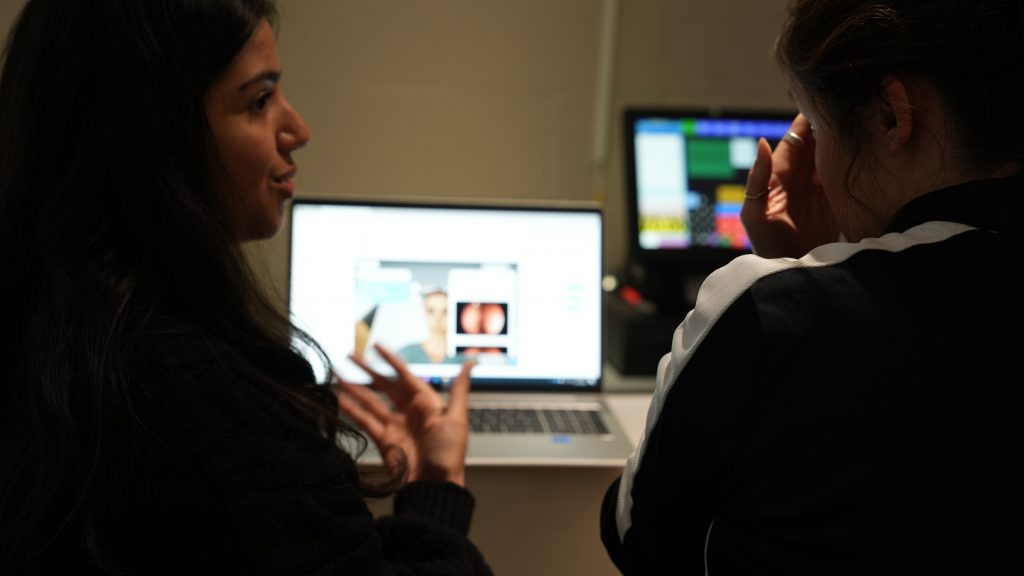
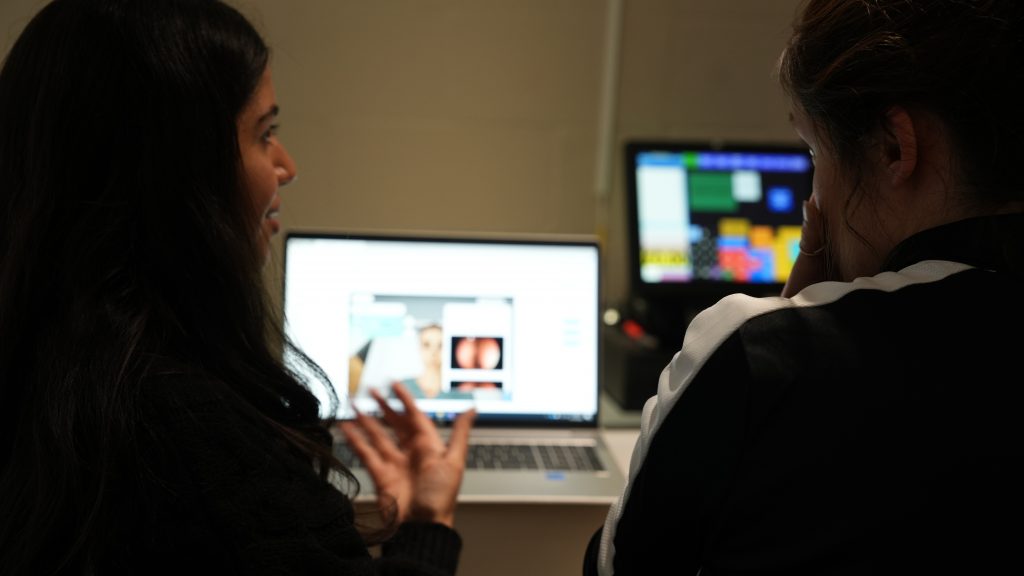
VIRTI is web and app-based software designed to transform education through immersive experiences. With VIRTI, you have the power to construct dynamic simulated environments that closely replicate real-world scenarios, providing learners with a risk-free space to navigate through intricate concepts. This innovative platform enables the creation of both 360 and 2D interactive video scenarios, allowing for a multifaceted learning experience. One of the standout features of VIRTI is the ability to program virtual humans, endowing them with unique characteristics for lifelike face-to-face interactions. Imagine engaging with virtual patients or witnesses, the possibilities are truly limitless.
To demonstrate the creative application at the away day, Simran crafted a game of mystery diagnosis using VIRTI’s virtual human as the central storyteller. Embracing the theme of a winter expedition, participants embark on a quest to uncover patient symptoms through a series of clues presented as riddles. The virtual human guides the game, prompting participants to input their answers in the chat box, creating an interactive and engaging experience.
If you would like to try the demo, we have made the game available below:
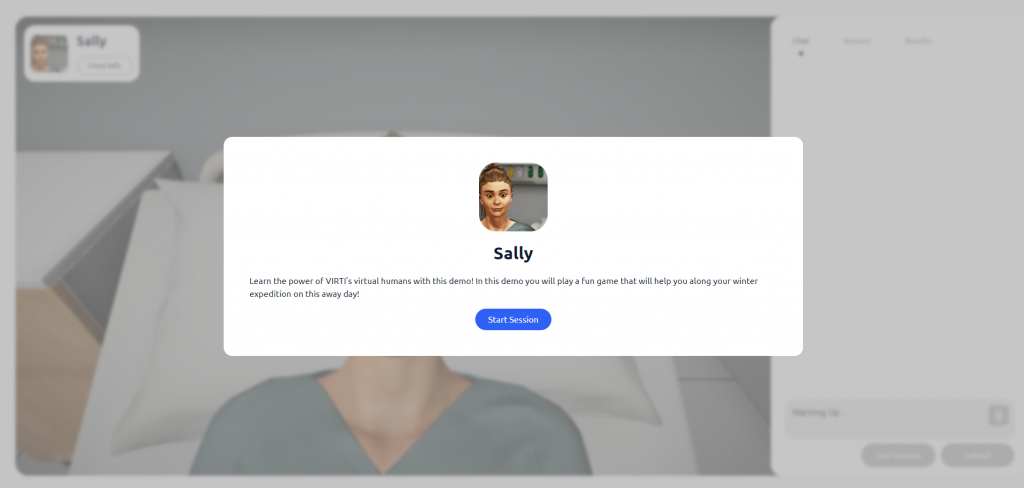
ThingLink
ThingLink is a versatile platform that empowers users to enhance various forms of visual media through the incorporation of hotspots. Whether you begin with a map, floor plan, image, video, 360° image, 360° video, or a 3D model, ThingLink enables seamless integration to create immersive experiences.
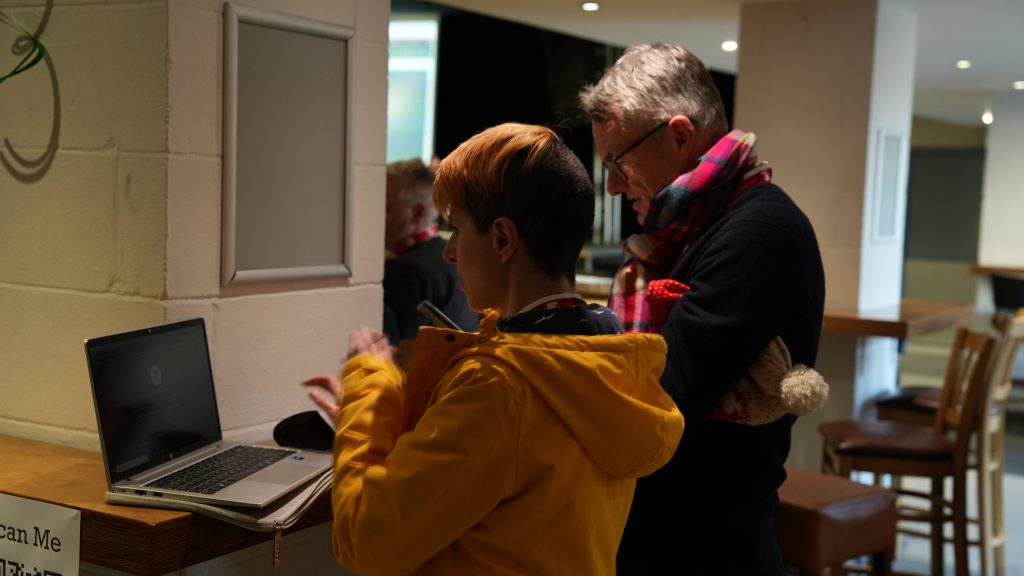
To showcase the platform’s capabilities at the away day, George Hill from the TILE team developed a very cool mini escape room, presented to staff by Robin Ray!
It is linked below for you to experience firsthand. Explore the interactive elements and discover the potential for innovative and engaging educational content.
ThingLink

Wooclap
We wanted to take the opportunity to showcase other tools we have access to, that we think can still contribute towards creating more engaging learning opportunities. TILE’s Rowan Walker has been working on Wooclap, a polling solution where you can create online polls for students to join.
With 21 question types including, ‘Find on Image’ questions, brainstorming questions, fill in the blanks and more! To make things seamless, you can integrate Wooclap polls with your Powerpoint slides!
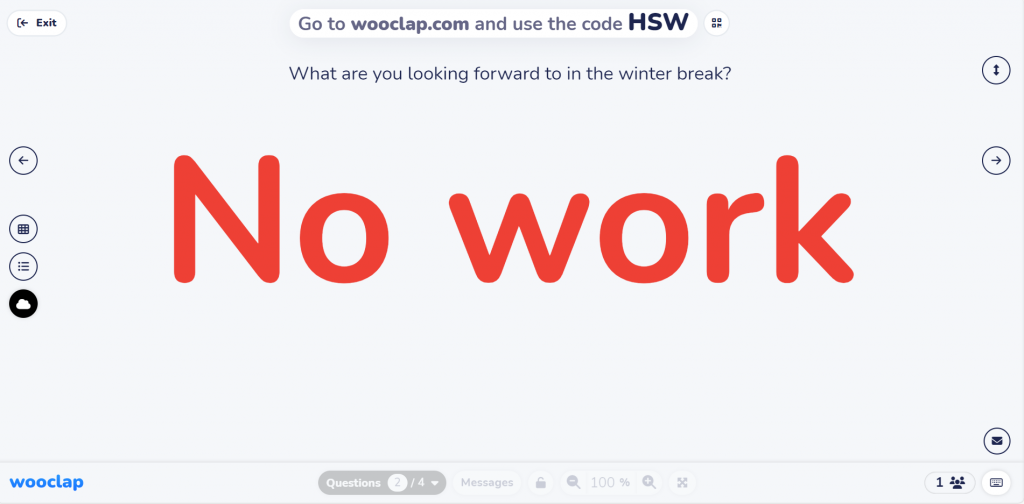
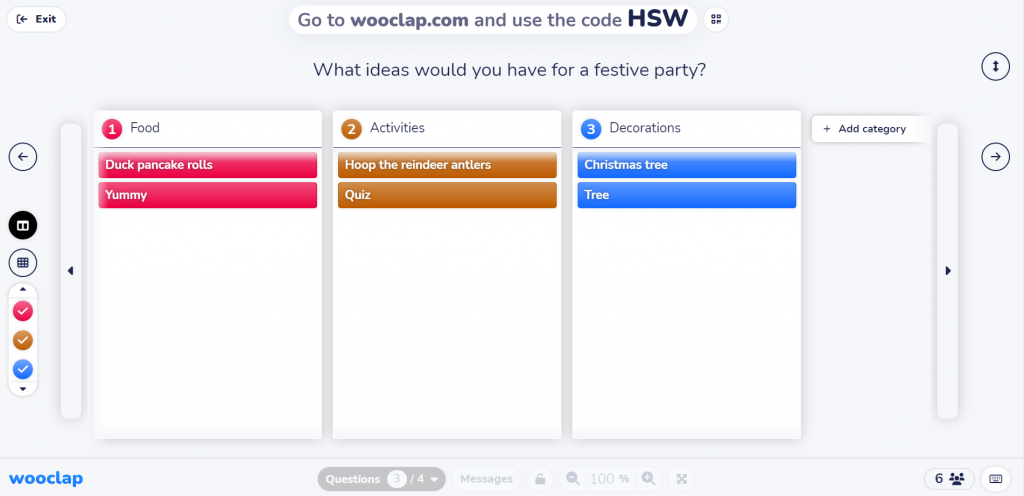
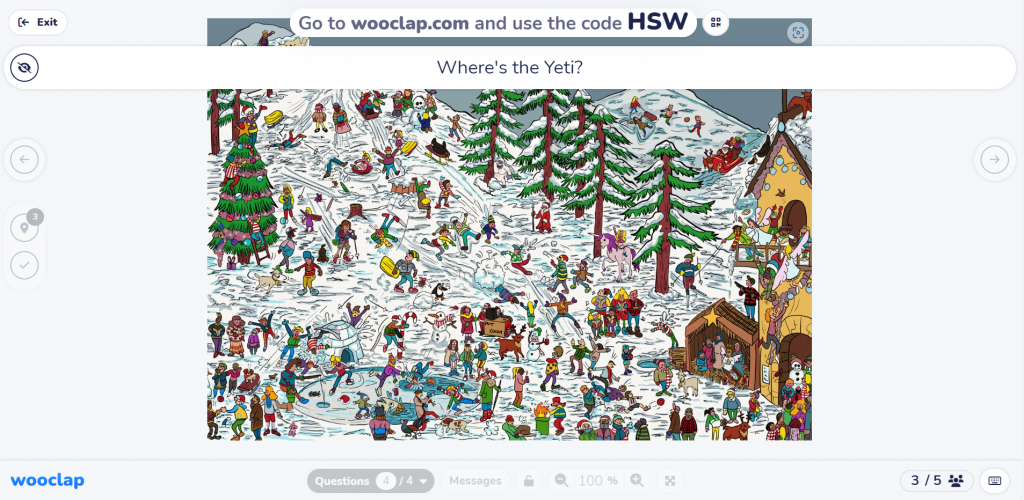
Padlet
Padlet is a unique notice board tool which is great to have for more collaboration between lecturers and students. These boards are amazing to obtain feedback, for e-portfolios and more!
The TILE team used this to create a Padlet for feedback on the away day demonstrations by our team. If you would like to add anything or are inspired by the technology we have showcased, feel free to post on here to let us know!
HSW Away Day – Share your thoughts and tech tips (padlet.org)
